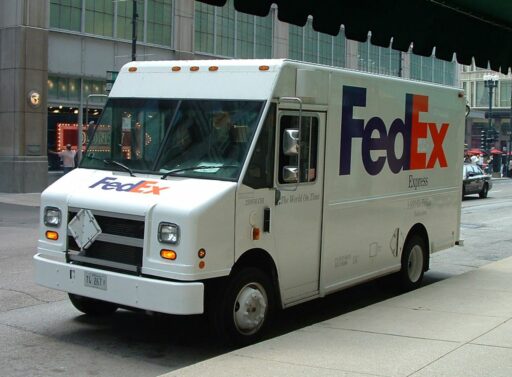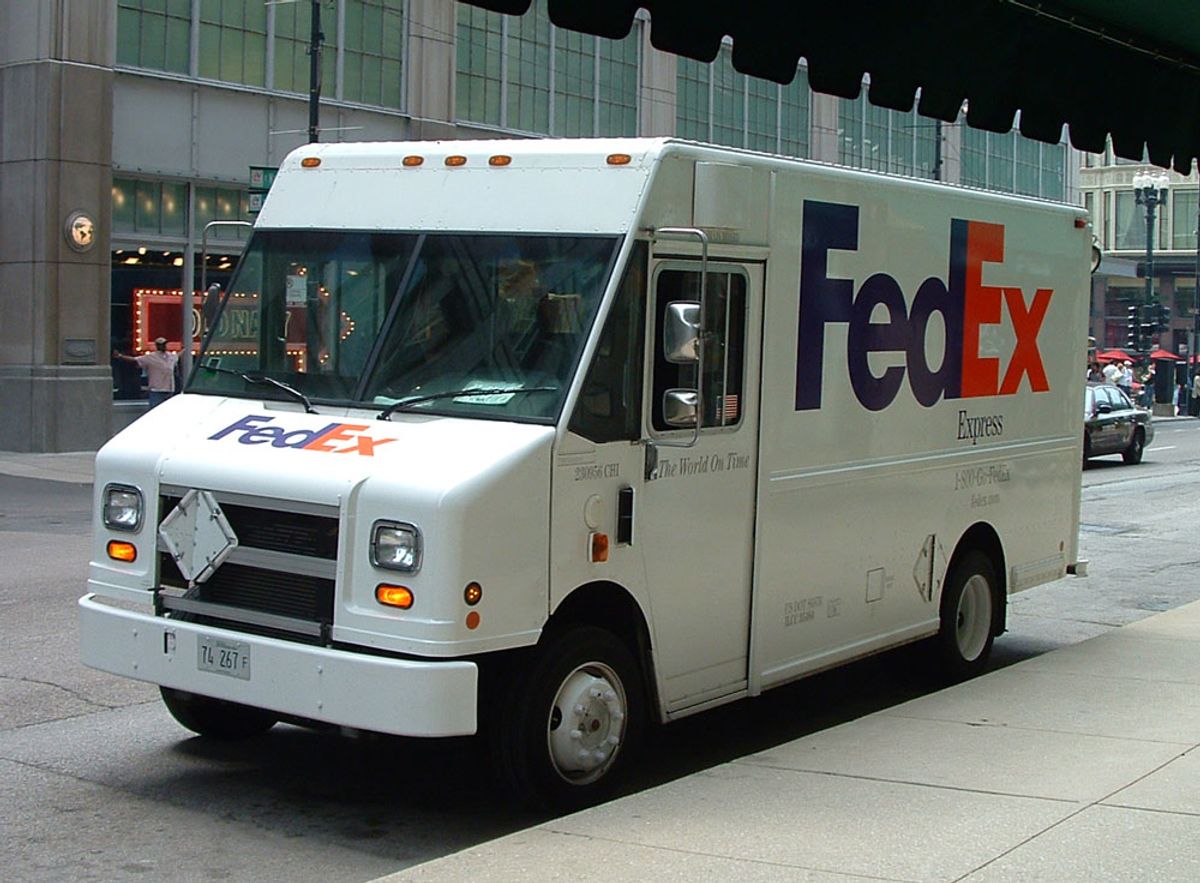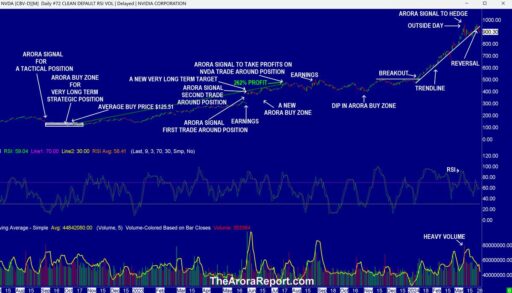In the dynamic landscape of logistics and delivery services, FedEx stands as a prominent player, constantly adapting to market changes and consumer demands. As we delve into FedEx’s stock trends for 2023, we will explore the company’s strategic initiatives, e-commerce evolution, financial performance, global market position, and insights from investors and analysts. With an eye on the future, this article aims to unpack the key factors influencing FedEx’s stock in the current year.
Key Takeaways
- FedEx’s recent $5 billion share buyback and raised guidance for 2024 have contributed to a significant stock rally, highlighting the company’s confidence in its cost-reduction strategies and future performance.
- The termination of the Amazon delivery pact in 2019 has positioned FedEx to focus on building a ‘critical mass’ of retailers and leveraging ShopRunner to enhance its e-commerce offerings and compete more effectively.
- Despite a challenging demand environment, FedEx reported improvements in U.S. domestic package yield and is taking steps to increase profitability and efficiency, as evidenced in their Q3 2024 earnings call.
- FedEx Express is experiencing international export volume growth and is implementing actions to grow the business profitably while maintaining high service quality, despite revenue dips due to various market pressures.
- Analysts, including those from The Motley Fool, hold positions in FedEx and recommend the stock, reflecting optimism in the company’s investing philosophy and its potential for future growth.
Strategic Initiatives and Cost Management
Cost-Reduction Measures Amidst Inflation
In response to the inflationary pressures that have been building up, FedEx has taken significant steps to mitigate the impact on its financial performance. The company has faced over $200 million of inflationary pressure on a year-over-year basis, which has been partially offset by strategic cost-reduction initiatives.
FedEx’s DRIVE program, along with responsible headcount management, has played a crucial role in curbing expenses. The company’s efforts to streamline operations and improve efficiency are evident in the following areas:
- Implementation of DRIVE initiatives
- Optimization of delivery routes
- Strategic workforce adjustments
- Investment in automation and technology
While the broader market faces challenges with companies losing pricing power, FedEx’s proactive measures aim to maintain a competitive edge.
The impact of these measures is not only reflected in the company’s operational costs but also in its pricing strategies. As the market adjusts to the new economic realities, FedEx’s approach to cost management will be a key factor in its ability to navigate the inflationary environment successfully.
Investment in ‘fdx’ Platform and ShopRunner Integration
FedEx’s investment in the ‘fdx’ platform signifies a strategic move to enhance its e-commerce and delivery capabilities. The integration of ShopRunner is poised to streamline the online shopping experience, offering a unified alternative to managing purchases across various sites. The platform’s focus on end-to-end solutions from demand generation to returns is expected to offer significant benefits to both FedEx and its merchant partners.
The fdx platform is designed to connect the entire customer journey, providing real-time visibility and leveraging FedEx’s vast data analytics capabilities.
The anticipation for the fdx platform is high among merchants, with a private preview already generating positive feedback. The full launch, scheduled for this fall, is eagerly awaited by the market. FedEx’s approach to ‘democratizing’ e-commerce through this platform could redefine the relationship between merchants and logistics providers.
- Private Preview: Opened for select brands and retailers
- Customer Journey: End-to-end e-commerce solutions
- Real-Time Visibility: Data-driven insights from daily deliveries
- Launch Date: Scheduled for fall 2023
Sriram Krishnasamy’s appointment as chief digital and information officer underscores the company’s commitment to digital innovation and optimization. With the fdx platform, FedEx is not just delivering packages but also delivering on its promise to revolutionize the e-commerce landscape.
Guidance and Share Buyback Impact on Stock Performance
FedEx’s recent announcement of a new $5 billion share repurchase program, in addition to the remaining $600 million from the 2021 authorization, has signaled a strong commitment to enhancing stockholder value. This strategic move, coupled with a $1 billion accelerated share repurchase in Q3 and plans for an additional $500 million in Q4, underscores the company’s confidence in its financial health.
The raised guidance for 2024 and the aggressive share buyback plan have been well-received by investors, as evidenced by a significant stock rally of over 12% in after-hours trading. The company’s focus on cost-cutting measures and prudent capital management is beginning to reflect positively on its stock performance.
The emphasis on returning value to shareholders through buybacks and dividends aligns with FedEx’s capital return plan, reinforcing the attractiveness of FedEx stock in a competitive market.
Here is a summary of the share repurchase activity:
| Fiscal Year | Share Repurchases | Additional Planned Repurchases |
|---|---|---|
| 2024 | $2 billion | $500 million |
The proactive approach to share repurchases, along with consistent dividend payments, presents a compelling case for investors looking at FedEx as a potential addition to their portfolios.
FedEx’s E-Commerce Evolution


The End of the Amazon Delivery Pact
In 2019, FedEx made a strategic move to end its delivery pact with Amazon, marking a significant shift in the logistics landscape. Since then, Amazon has not only continued to expand its own logistics network but has also surpassed UPS in parcel volume, becoming the largest delivery business in the United States. This development underscores the competitive pressures FedEx faces in the e-commerce domain.
FedEx’s response includes a series of optimization plans aimed at streamlining operations and enhancing efficiency. The company is focused on maintaining a balance between its employee courier and contracted service provider models, which are both integral to the success of its Network 2.0 strategy.
FedEx’s transformation efforts and the launch of a revamped delivery platform in the fall of 2024 are poised to redefine its competitive edge. The new platform is designed to offer an end-to-end commerce solution, enabling businesses to optimize supply chains and manage deliveries more effectively.
As FedEx navigates through these changes, the company’s ability to adapt to a dynamic demand environment will be crucial for its future success and positioning in the market.
Building a ‘Critical Mass’ of Retailers
FedEx’s strategic pivot towards building a critical mass of retailers is a calculated move to fortify its position in the e-commerce landscape. By aggregating a diverse array of retailers, FedEx aims to create a robust network that rivals the convenience and reach of Amazon’s own distribution system. This network is not only about quantity but also about the quality of partnerships that can offer unique products and services to consumers.
The company’s E-commerce strategy team is at the forefront of this initiative, blending innovation and strategy to empower small and medium businesses in the fast-paced online retail space. Through collaboration, FedEx is unlocking growth opportunities for these businesses, which in turn enhances the overall value proposition of FedEx’s e-commerce ecosystem.
FedEx’s approach to e-commerce is multifaceted, focusing on both expanding its retailer network and enhancing the customer experience through technological advancements and service improvements.
The following table outlines the key components of FedEx’s strategy to build a critical mass of retailers:
| Component | Description |
|---|---|
| Partnership Diversity | Engaging a wide range of retailers from various sectors. |
| Service Enhancement | Improving logistics and delivery services for a seamless customer experience. |
| Technological Integration | Leveraging the ‘fdx’ platform and ShopRunner to streamline operations. |
| Market Expansion | Targeting growth in both domestic and international markets. |
By executing on these components, FedEx is not just competing with other shipping giants but is also redefining the e-commerce delivery model.
ShopRunner’s Role in Competing with Amazon and UPS
FedEx’s strategic move to end its delivery pact with Amazon has set the stage for a more direct competition in the e-commerce space. ShopRunner, acquired by FedEx, is at the heart of this strategy, aiming to create a cohesive shopping experience that rivals Amazon’s dominance. The integration of ShopRunner with FedEx’s ‘fdx’ platform is designed to offer merchants a suite of services that enhance the end-to-end commerce experience.
The ‘fdx’ platform, launching this fall, represents a significant step in FedEx’s e-commerce evolution. It promises to streamline the online shopping process by consolidating various merchant services, including demand generation, fulfillment, and post-purchase experiences. This unified approach is expected to attract a ‘critical mass’ of retailers, positioning FedEx as a formidable competitor to both Amazon and UPS.
FedEx’s commitment to optimizing its e-commerce offerings through ShopRunner and the ‘fdx’ platform reflects a clear vision for the future. The company’s efforts to enhance the customer and merchant experience could redefine the competitive landscape in package delivery and e-commerce solutions.
The table below highlights the anticipated benefits of the ‘fdx’ platform integration with ShopRunner:
| Feature | Description |
|---|---|
| Demand Generation | Assists merchants in attracting customers |
| Fulfillment Services | Streamlines the order fulfillment process |
| Tracking & Post-Purchase | Offers comprehensive tracking and customer support post-purchase |
FedEx’s approach to e-commerce is not just about competing; it’s about reimagining the delivery and shopping experience for customers and merchants alike.
Financial Performance Analysis


Q3 2024 Earnings Overview
FedEx’s Q3 2024 earnings report showcased a mix of challenges and triumphs. Operating income growth and margin expansion were achieved for the third consecutive quarter, despite a slight revenue decline in a tough market. The company’s earnings exceeded expectations by $0.40, with earnings per share (EPS) at $3.86, although revenue fell short at $21.7 billion. This performance comes even after weather-related disruptions earlier in the year.
Cost management played a pivotal role this quarter, with FedEx reporting permanent cost reductions totaling $1.8 billion for the fiscal year. The DRIVE initiative was central to these savings, reflecting disciplined cost controls and a focus on quality revenue. The company has also narrowed its adjusted EPS outlook, reaffirming the midpoint but tightening the range from $17-$18.50 to $17.25-$18.25.
The quarter’s results were a testament to FedEx’s resilience and strategic cost management, setting a positive tone for the remainder of the fiscal year.
Here’s a snapshot of the key financial metrics from the Q3 2024 earnings report:
| Metric | Q3 2023 | Q3 2024 | Change |
|---|---|---|---|
| EPS | $3.46 | $3.86 | +$0.40 |
| Revenue | $22.0B | $21.7B | -$0.3B |
| Cost Savings | – | $1.8B | – |
The focus on cost reduction and efficiency is expected to continue as FedEx navigates the evolving market landscape.
Revenue Trends and Package Yield Improvements
In the face of a challenging market, FedEx has demonstrated resilience with its revenue management strategies. FedEx Ground was the only segment to grow revenue in Q3, with a modest 1% increase to $8.7 billion, attributed to improved yield despite flat volume. This performance is particularly noteworthy considering the broader revenue decline experienced by the company.
Yield improvements have been a silver lining for FedEx amidst a landscape of increased market capacity and inflationary pressures. At FedEx Ground, a 1% yield increase was driven by home delivery and a favorable customer segment mix, which helped to mitigate the impact of lower fuel surcharges compared to the previous year.
The company’s cost management efforts have also paid dividends, with Ground’s adjusted operating income rising by $120 million. This was achieved through a combination of cost reductions and yield improvements, which allowed Ground to maintain a flat cost per package year over year, balancing higher first and last-mile costs with lower line haul expenses and improved dock productivity.
Market Cap and Stock Valuation Dynamics
In the ever-fluctuating world of stock valuations, FedEx’s market capitalization has been a focal point for investors. FedEx Leads S&P 500 After Surprise Earnings Growth Shocks Wall Street, with the company’s stock (FDX) surging on the back of robust earnings. Despite a slight dip in revenue, the earnings per share (EPS) saw a significant year-over-year increase, indicating a stronger than expected financial performance.
Market cap dynamics are not only about the numbers but also about investor sentiment and future growth prospects.
Understanding the valuation dynamics involves looking at both the quantitative data and the qualitative factors that influence stock prices. Here’s a snapshot of FedEx’s recent performance:
| Fiscal Quarter | EPS | Revenue | Market Cap |
|---|---|---|---|
| Q3 2024 | $3.86 | $21B | TBD |
The table above provides a concise view of the key financial metrics that are critical when assessing FedEx’s stock valuation. As the market digests this information, the implications for FedEx’s future stock performance remain a topic of keen interest.
FedEx’s Position in the Global Market


International Export Volume Growth
FedEx’s international export volume has shown resilience, with a 4% increase in the recent quarter, highlighting a positive trend amidst global trade challenges. This growth is particularly notable in the international economy segment, which surged by 29%, reflecting the strategic importance of FedEx in facilitating global e-commerce expansion.
The stabilization of volumes indicates a recovery from previous demand weaknesses, as FedEx continues to adapt its air network to align capacity with the evolving market demands.
Despite some softness in overall volume, the cross-border e-commerce logistics market is burgeoning, and FedEx is positioning itself to capitalize on this trend. The company’s proactive measures to manage the mix shift towards deferred and e-commerce products are expected to support profitable growth moving forward.
Monthly Volume Trends
| Month | International Export Volume Change |
|---|---|
| January | 3% Increase |
| February | 4% Increase |
| March | 5% Increase |
As FedEx navigates the dynamic global demand environment, it remains vigilant of factors such as inventory restocking, global trade patterns, inflation, and e-commerce trends. These elements are crucial in shaping the company’s revenue expectations and strategic responses in the competitive logistics landscape.
Adapting to a Dynamic Demand Environment
In the face of a dynamic demand environment, FedEx has shown resilience and adaptability. The company’s ability to maintain operating income growth and margin expansion, even with lower revenue, is a testament to its robust strategic planning. This performance is particularly notable given the industry-wide challenges and serves as a clear indicator of FedEx’s commitment to its transformation goals through the DRIVE initiative.
The logistics landscape is continuously evolving, with e-commerce logistics becoming increasingly complex. FedEx’s weekly team meetings to assess and adjust to these changes are crucial. They ensure that successful programs are scaled up while underperforming ones are reevaluated or replaced, keeping the company agile in a competitive market.
The relentless pursuit of efficiency and the ability to pivot quickly are essential for FedEx to stay ahead. The company’s focus on understanding and leveraging data in e-commerce logistics is a key factor in its ability to adapt swiftly to market shifts and consumer demands.
FedEx Express’s Performance and Future Outlook
FedEx Express has faced a challenging period, with a 2% decline in revenue year over year. This was attributed to a combination of volume softness, lower fuel and demand surcharges, and a shift towards deferred and e-commerce products. Despite these headwinds, there is a silver lining as international export volumes saw a 4% increase, signaling potential stabilization in demand.
The company’s strategic response includes volume-related and structural cost-reduction actions. Notably, FedEx Express has reduced flight hours and retired certain aircraft ahead of schedule, aiming to align operations with current demand levels.
Yield trends at FedEx Express have been mixed, with pressures from reduced international export demand surcharges and a growing proportion of lower-yielding e-commerce and deferred products. However, the company remains optimistic, focusing on profitability improvements in a still challenging demand environment. The integration of FedEx Ground and FedEx Services into Federal Express Corporation is expected to enhance network flexibility, efficiency, and customer offerings, which could translate into better profitability moving forward.
Investor Insights and Analyst Perspectives


The Motley Fool’s Stance on FedEx
The Motley Fool, a well-regarded investment advice platform, has consistently been bullish on FedEx, holding positions and recommending the stock to its readers. Their confidence in FedEx is reflected in the stock’s performance, particularly after the company’s announcement of cost-cutting measures and a substantial share buyback program, which led to a notable after-hours stock price rally.
The Motley Fool’s investment philosophy emphasizes long-term growth and value creation, aligning with FedEx’s strategic initiatives and financial health. Their analysis often includes detailed company evaluations and model portfolios, which have historically outperformed the market. For instance, the Stock Advisor service boasts a 674% return compared to the S&P 500’s 154% since its inception.
FedEx’s commitment to efficiency and profitability, coupled with strategic investments in technology and e-commerce, positions the company favorably in the eyes of investors and analysts alike.
The Motley Fool’s stance is not just based on past performance but also on FedEx’s potential to adapt and thrive in a changing market landscape, as evidenced by their recent earnings calls and forward-looking statements from FedEx executives.
Analyst Stock Picks and Returns Comparison
In the realm of stock picks and returns, analysts have been keenly observing the performance of various sectors and companies. FedEx’s stock has been under the microscope, with comparisons drawn against industry peers and market benchmarks. A notable point of discussion is the comparison of FedEx’s returns to those of the S&P 500 index.
| Stock | FedEx | S&P 500 |
|---|---|---|
| Return (%) | 271 | 129 |
Returns as of 03/29/2024
Analysts have spotlighted companies like Ameriprise Financial and CRH as top stock picks, while debates around the valuation of tech giants like NVIDIA and Google continue to heat up. The question remains whether FedEx can maintain its competitive edge and deliver returns that satisfy investor expectations.
While individual stock picks can yield significant returns, a diversified portfolio strategy remains a cornerstone of risk management and long-term growth.
Investing Philosophy and the Future of FedEx Stock
As investors consider the future of FedEx stock, the company’s recent actions to cut costs and trim spending have been pivotal. The raised guidance for 2024 and the announcement of a $5 billion share buyback program have instilled a sense of optimism, despite the challenging demand environment. The Motley Fool’s investing philosophy, which includes holding stocks for over five years and adding new savings regularly, aligns with the long-term growth potential that FedEx exhibits.
FedEx’s commitment to improving profitability, even in a tough market, underscores its resilience and strategic focus.
The following table illustrates the Motley Fool’s returns compared to the broader market, showcasing the potential for FedEx as a long-term investment:
| Service | Returns | S&P 500 Returns |
|---|---|---|
| Stock Advisor | 674% | 154% |
Investors should note the recent stake reduction by PRIMECAP Management, which may signal a shift in institutional confidence. However, the overall market sentiment and analyst perspectives suggest that FedEx remains a stock to watch for those with a long-term investing horizon.
Conclusion
As we wrap up our analysis of FedEx stock and the trends to watch in 2023, it’s clear that the company is navigating a complex landscape with strategic agility. Despite a challenging demand environment and cost inflation, FedEx has demonstrated resilience by implementing cost-reduction actions and improving domestic package yields. The company’s decision to end its delivery pact with Amazon and focus on its own logistics network, including the upcoming launch of the ‘fdx’ platform, signals a commitment to innovation and competitiveness in the e-commerce space. The positive market response to FedEx’s raised 2024 guidance and share buyback program reflects investor optimism. With FedEx’s transformation efforts and the stabilization of volumes, particularly in international exports, investors may find FedEx to be an intriguing stock to watch as it continues to adapt and potentially thrive in the evolving logistics and delivery industry.
Frequently Asked Questions
What recent actions have boosted FedEx stock performance?
FedEx’s recent cost-reduction measures and a raised guidance for 2024, along with a $5 billion share buyback program, have positively impacted the stock, leading to a rally of more than 12% in after-hours trading.
How has the end of the delivery pact with Amazon affected FedEx?
Since ending its delivery pact with Amazon in 2019, FedEx has faced competition as Amazon has become America’s largest delivery business. However, FedEx is focusing on eCommerce strategies, including the integration of ShopRunner, to build a critical mass of retailers and compete effectively.
What is FedEx’s ‘fdx’ platform, and what impact will it have?
The ‘fdx’ platform is FedEx’s upcoming merchant logistics platform, set to launch in the fall. It represents the progression of FedEx’s eCommerce strategy following the acquisition of ShopRunner in 2020. It is expected to enhance the company’s eCommerce capabilities.
How is FedEx coping with the current challenging demand environment?
FedEx is managing the challenging demand environment by implementing cost-reduction actions and focusing on U.S. domestic package yield improvement, despite facing demand weakness and cost inflation.
What is The Motley Fool’s stance on FedEx, and what services do they offer investors?
The Motley Fool holds positions in and recommends FedEx. They offer premium investing services, including new stock picks each month, detailed company analysis, model portfolios, and more to their members.
What are the recent trends in FedEx’s international export volume and FedEx Express’s performance?
FedEx has seen a stabilization in monthly volume trends and a 4% increase in international export volume in the recent quarter. However, FedEx Express’s revenue was down 2% year over year due to volume softness and other factors, though the company is taking actions to grow this business profitably.





